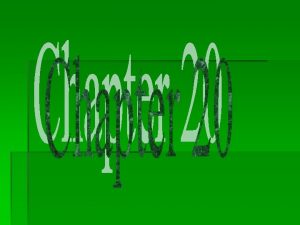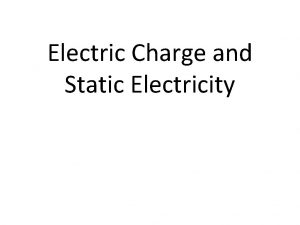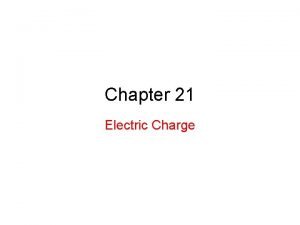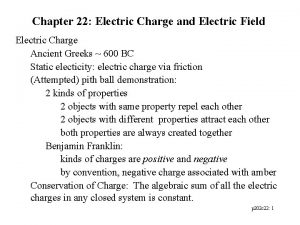Chapter Twenty Electric Circuits 20 1 Charge 20










- Slides: 10


Chapter Twenty: Electric Circuits Ø 20. 1 Charge Ø 20. 2 Electric Circuits Ø 20. 3 Current and Voltage Ø 20. 4 Resistance and Ohm’s Law

20. 3 Current and voltage ØElectric current is measured in units called amperes, or amps (A) for short. ØOne amp is a flow of a certain quantity of electricity in one second. ØThe amount of electric current entering a circuit always equals the amount exiting the circuit.

20. 3 Voltage ØVoltage is a measure of electric potential energy, just like height is a measure of gravitational potential energy. ØVoltage is measured in volts (V). ØA voltage difference of 1 volt means 1 amp of current does 1 joule of work in 1 second.

20. 3 Voltage ØA difference in voltage provides the energy that causes current to flow.

20. 3 Voltage ØA useful meter is a multimeter, which Øcan measure voltage or current, and sometimes resistance. ØTo measure voltage, the meter’s probes are touched to two places in a circuit or across a battery.

20. 3 Batteries ØA battery uses stored chemical energy to create the voltage difference. ØThree 1. 5 -volt batteries can be stacked to make a total voltage of 4. 5 volts in a flashlight.

20. 3 Batteries ØA pump is like a battery because it brings water from a position of low energy to high energy.

20. 3 Measuring current Ø If you want to measure current you must force the current to pass through the meter. ØMultimeters can measure two types of current: alternating current (AC) and direct current (DC).

20. 3 Measuring current Ø Circuit breakers and fuses are two kinds of devices that protect circuits from too much current by making a break that stops the current.
 Chapter 21 electric charge and electric field
Chapter 21 electric charge and electric field Chapter 21 electric charge and electric field
Chapter 21 electric charge and electric field Coulombs units
Coulombs units Chapter 21 electric charge and electric field
Chapter 21 electric charge and electric field Difference between charge and electric charge
Difference between charge and electric charge Difference between static and current electricity
Difference between static and current electricity Fundamentals of electric circuits chapter 4 solutions
Fundamentals of electric circuits chapter 4 solutions Chapter 20 electric circuits
Chapter 20 electric circuits Conceptual physics chapter 35 electric circuits
Conceptual physics chapter 35 electric circuits Chapter 20 electric circuits
Chapter 20 electric circuits Fundamentals of electric circuits chapter 9 solutions
Fundamentals of electric circuits chapter 9 solutions


















